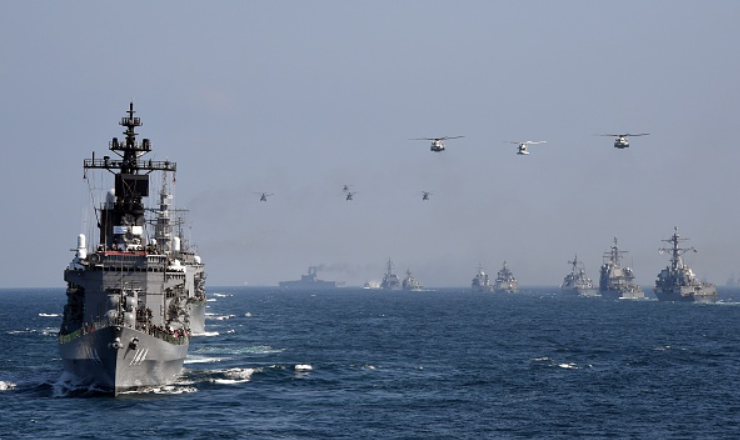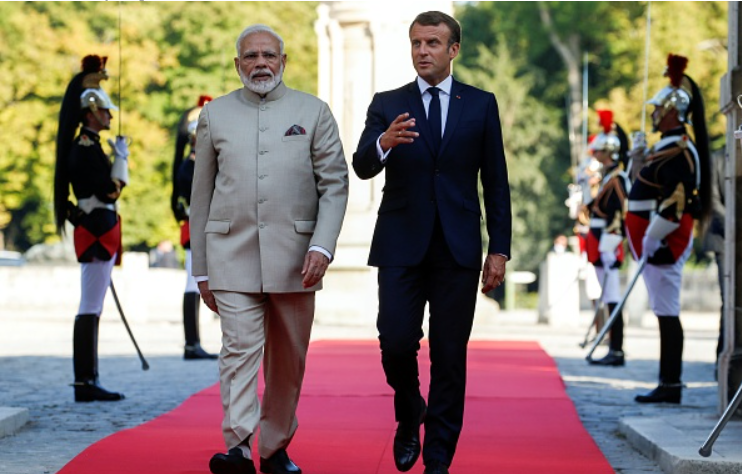
As France accepted the rotating annual presidency of the Indian Ocean Commission (IOC) during the 35th Council of Ministers meeting on May 20, French Secretary of State Jean-Baptiste Lemoyne highlighted an agenda that revolved around a “realistic ambition, adapted to the region and its positioning in the Indo-Pacific.” With territories in the Western Indian Ocean (WIO), France is an influential player in the sub-region and has used the IOC to strengthen its position.
Although India’s attention has previously focused towards its east, as a status-quo Indian Ocean power, the preservation of its influence and the maintenance of stability in sub-regions including WIO form a crucial pillar in India’s regional policy. Moreover, Japan has also continued to bolster its engagements with the littoral countries of the WIO to secure its energy interests, boost investments, and enhance infrastructural development.
With converging interests and large stakes, India has the opportunity to build its partnership with both France and Japan, and lay the groundwork for a trilateral arrangement to better coordinate on shared commitments to a free, open, inclusive and rules based order in the Indo-Pacific and in the WIO at a time when China is slowly tilting the balance of power in its favor. Solidifying such an arrangement with like-minded partners will boost India’s capacity to engage more proactively with WIO littoral countries and safeguard its regional interests.
France and Japan in the WIO
The WIO takes center stage in France’s interests in the Indian Ocean. It has more than 4,000 personnel as part of its military deployment in Indian Ocean Region, including approximately 2,000 in the WIO, to ensure protection of the French territories and the surveillance of its Exclusive Economic Zones (EEZs). The French EEZ in the Indian Ocean encompasses 20 percent of France’s total EEZ. It is thus crucial for France to ensure its continued presence in its overseas territories in the WIO.
With converging interests and large stakes, India has the opportunity to build its partnership with both France and Japan, and lay the groundwork for a trilateral arrangement to better coordinate on shared commitments to a free, open, inclusive and rules based order in the Indo-Pacific and in the WIO at a time when China is slowly tilting the balance of power in its favor.
Established in 1982, the IOC forms as a fundamental platform for French interests in maintaining its role and presence in the WIO. the IOC is a regional forum in the southwest region of the Indian Ocean and one of the few major institutions that specifically focuses on the WIO. It comprises five countries–Comoros, Madagascar, Mauritius, Seychelles, and France (representing the overseas départements of Réunion and Mayotte, together with the French Southern and Antarctic Territories). Moreover, India, Japan, the European Union, China, and the United Nations are observers in the IOC. France is a highly active and involved member in the sub-regional organization. Its contribution accounts for roughly 40 percent of the IOC’s operating budget. The Agence Française de Développement is the IOC’s second-largest partner, while the EU is the top financial supporter of the IOC.
However, China’s activities in the greater Indian Ocean have challenged France’s strategic interests in the WIO. France sees China’s deepening strategic footprints as a threat to freedom of navigation and its regional strategic interests. In 2018, President Macron proposed to bolster strategic partnerships with India and Japan to check China’s regional ambitions. The following year, he emphasized that “The time of European naivete towards China is over.”
China’s growing economic and political clout in the WIO has also become a cause of concern for Japan. With the introduction of the Belt and Road Initiative in 2013, China has demonstrated its ambitions to increase its economic and military engagement along the Indian Ocean maritime routes. The BRI’s notorious reputation has become a rallying point for Japan to expand its presence in the WIO, as well as craft strategy that emphasizes transparency and the rules-based order and views India as a central actor.
Japan’s connectivity and trade interests between the Pacific and Africa form a major pillar in its Free and Open Indo-Pacific Strategy, and have been supported with a military facility in Djibouti as well as funded ports in Kenya and Mozambique. In 2016, Japan’s Partnership for Quality Infrastructure initiative was expanded to USD $200 billion to include projects around the world.

The WIO in India’s Strategic Calculus
The WIO includes ten countries: Somalia, Kenya, Tanzania, Mozambique, South Africa, Comoros, Madagascar, Seychelles, Mauritius, and the French overseas territory of Réunion. Linking the southeastern coast of Africa to the greater Indian Ocean, the sub-region is home to one of the key maritime chokepoints in the Indian Ocean—the Mozambique channel. Large portions of international maritime trade passes through the sub-region, including a significant share of the world’s crude oil supplies. Much of India’s diaspora, remittances, and energy interests also lie to its west. In the WIO region alone, there are more than two million Indians; moreover, majority of India’s energy imports transits through the maritime sub-region from West Asia and Africa.
While India’s political attention has in recent years been directed east, the Indian Navy has provided security in the WIO through conducting humanitarian assistance and disaster relief operations, anti-piracy patrols, and goodwill port calls. India has also forged closer partnerships with littoral states of the sub-region in capacity building efforts, which include offering Lines of Credit for patrol vessels, short/medium-range maritime patrol aircraft, coastal surveillance radars, shore-based Automatic Identification Stations, and spares to several of India’s maritime neighbors. India has also worked with extra-regional powers such as France to ensure the stability of the greater Indian Ocean. As the WIO has become a more competitive geopolitical region, there has also been an effort by New Delhi to pivot west. This was evident when Prime Minister Narendra Modi accorded the African continent as India’s “top priority” in his address to the Ugandan parliament 2018.
India’s interest in enhancing its role in the WIO has been challenged by China’s increasing strategic footprints throughout the greater Indian Ocean. As noted by Sankalp Gurjar, there are four significant dimensions to China’s activities in the WIO: dual-use infrastructure-building, political and diplomatic relations, connectivity, and military-motivated activities. Since 2008, China has greatly increased its naval presence in the WIO, driving Indian concerns of a potential military encirclement. The construction of a military base in Djibouti, the continued participation the Chinese navy in anti-piracy operations, and the deployment of submarines are physical indicators of China’s intent to enhance its power projection. The ambiguity of China’s posture gives rise to questions about its strategic objectives. Traditionally, India has maintained a superior naval position in the Indian Ocean; however, the strategic balance is starting to shift.
This directly challenges India’s national interest in securing itself as a net security provider and influential player in the WIO. Moreover, asymmetrically interdependent economic ties continue to increase China’s leverage over the WIO countries. Moreover, with France’s focus on the WIO as a key part of its Indo-Pacific strategy, India’s natural strategic interests in the Indian Ocean, and Japan’s focus on trade and connectivity across the region, the three countries have natural points of cooperation for a trilateral arrangement.
Enhancing the India-France-Japan Trilateral in the WIO
The India-France-Japan trilateral arrangement will inevitably have diverse dimensions based on the capacities of its members. The idea of trilateralism as a form of minilateralism has gained significant traction in recent years. Trilateral arrangements are generally narrower and informal in nature and aim to address specific issues that are often regionally focused, making them less controversial to regional countries in contrast to bilateral defense alliances. Therefore, trilateralism can overcome collective action problems by insisting on fewer members and a narrower convergence of interests.
Collaborative actions in the realm of traditional and non-traditional maritime security, infrastructure connectivity and economic development, and regional capacity building measures are key points of potential trilateral collaboration. Foundations for the India-France-Japan trilateral have been built by joint involvement in multilateral forums such as the IOC, recent trilateral workshops on the Indo-Pacific, and past bilateral naval exercises.
This trilateral would also allow the three countries to deviate from the more confrontational nature of security arrangements such as the Quadrilateral Security Dialogue vis-à-vis China.
This trilateral would also allow the three countries to deviate from the more confrontational nature of security arrangements such as the Quadrilateral Security Dialogue vis-à-vis China. This may also provide greater space for littoral countries of WIO to be more accommodating towards the new arrangement without worrying about falling in between the overarching power competition between the United States and China.
However, for such an arrangement to materialize, steps must be taken to increase the level of inter-state coordination, information sharing, and joint naval activities. Three general areas of cooperation can be further explored to support a trilateral arrangement.
The first possible area is infrastructure cooperation. Falling under the broad gamut of economic collaboration, this area can be addressed by the three countries to boost connectivity and economic development in the WIO. The Japan-India Asia-Africa Growth Corridor, which banked on transparent infrastructure development in Africa, may offer a useful framework in this regard. Though, it was primarily focused on the African continent, its objectives, strategies and cooperative frameworks may offer a model that could be expanded to include France.
The second possible area is maritime security. All three countries can collaborate in maintaining a robust defense framework to ensuring a free, open, and rules based WIO. This can be done by strengthening information and intelligence sharing, increasing joint exercises, and coordinating frequent patrols. The third area can involve cooperation in blue economy. India’s Indo-Pacific Oceans Initiative (IPOI), proposed by Narendra Modi in 2019, can be a framework for this area of cooperation. The IPOI focuses of such an creating partnerships amongst interested countries in enhancing the sustainable use of marine resources, and disaster prevention and management. With Japan and France giving their support, the initiative can serve as a crucial avenue for area-specific trilateral cooperation.
***
Image 1: TORU YAMANAKA/AFP via Getty Images


